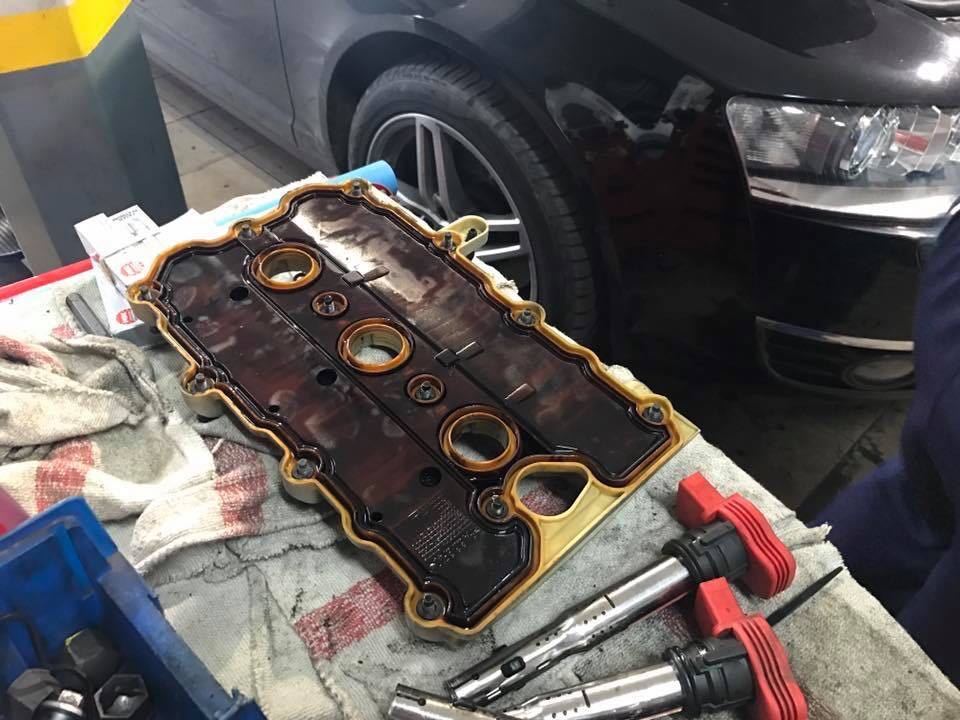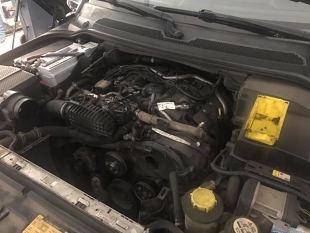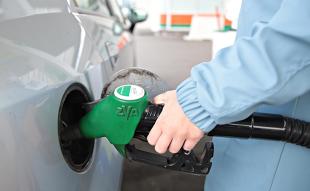
Carbon deposits in the engine. How to minimize its deposition?
 Carbon formation is a particularly undesirable phenomenon from the point of view of engine operation, but its complete elimination is almost impossible. This is due to the composition of modern fuel, the nature of the physicochemical processes that occur during combustion, but that's not all. The cylinder-piston system is a place particularly prone to carbon deposits. What are the reasons for the formation of deposits and can this phenomenon be minimized?
Carbon formation is a particularly undesirable phenomenon from the point of view of engine operation, but its complete elimination is almost impossible. This is due to the composition of modern fuel, the nature of the physicochemical processes that occur during combustion, but that's not all. The cylinder-piston system is a place particularly prone to carbon deposits. What are the reasons for the formation of deposits and can this phenomenon be minimized?
The problem of soot affects, to a greater or lesser extent, all types of engines, and its formation is a consequence of imperfect combustion of the fuel-air mixture. The immediate cause is that the engine oil mixes with the fuel. Carbon deposits are deposited in the combustion chamber, which is a product of sintering and "coking" of engine oil and semi-solids derived from fuel. In the case of spark ignition engines, the chemical compounds present in the fuel also contribute to the formation of carbon deposits, which are designed to reduce the knocking phenomenon.
“The driving style of the driver is important in the context of the formation of soot in the engine. Neither extreme is good: driving at low or only high speeds and driving only for short distances increases the risk of engine deposits. The latter also affects spark plugs, which do not reach the self-cleaning temperature (about 450 degrees C) for a long time. Turbochargers, on the other hand, encourage low rpm driving, which allows efficient driving in the 1200-1500 rpm range, which unfortunately contributes to carbon deposits. This effect can be minimized by changing your driving style and using the highest quality oils. An example of this is Total oils with ART technology, which, according to ACEA (European Automobile Manufacturers Association), increase engine protection by up to 74%,” says Andrzej Husiatynski, Head of Technical Department at Total Polska.
 Another technical reason is the lack of a software update on the main computer responsible for determining the correct fuel/air ratio. In this context, it is also worth mentioning non-professional tuning, i.e. changing the "fuel map", which can lead to a violation of proportions, and therefore to an excessively rich fuel-air mixture. The lambda probe also plays an important role as it measures the amount of oxygen in the exhaust gases. The sensor communicates directly with the ECU (electronic control unit), which regulates the amount of gasoline injected depending on the air flow. Its defect can distort the measurement of the parameters of the measured exhaust gases.
Another technical reason is the lack of a software update on the main computer responsible for determining the correct fuel/air ratio. In this context, it is also worth mentioning non-professional tuning, i.e. changing the "fuel map", which can lead to a violation of proportions, and therefore to an excessively rich fuel-air mixture. The lambda probe also plays an important role as it measures the amount of oxygen in the exhaust gases. The sensor communicates directly with the ECU (electronic control unit), which regulates the amount of gasoline injected depending on the air flow. Its defect can distort the measurement of the parameters of the measured exhaust gases.
Faulty elements of the ignition system (coils, spark plugs) and, for example, the timing chain are also the cause of carbon deposits. If it is stretched, the timing phases may shift, and, as a result, the combustion process will be disrupted. Therefore, there can be many technical reasons, so the engine must be serviced regularly. Even in the case of new cars, one should not be limited to changing the oil and filters. Only a comprehensive and regular inspection can minimize the risk of carbon deposits and subsequent malfunctions.
See also: When can I order an additional license plate?
 The places most prone to carbon deposits are: engine valves, intake and exhaust manifolds, variable geometry turbocharger system (so-called “steering wheels”), swirl flaps in diesel engines, piston bottoms, engine cylinder liners, catalyst, particulate filter. , EGR valve and piston rings. Gasoline engines with direct fuel injection are particularly vulnerable. By delivering fuel directly to the combustion chamber, the fuel does not wash over the intake valves, increasing the risk of carbon deposits. Ultimately, this can lead to a violation of the ratio of the fuel-air mixture, since the required amount of air will not be supplied to the combustion chamber. The computer can of course take this into account by adjusting the fuel/air ratio to ensure proper combustion, but only to a certain extent.
The places most prone to carbon deposits are: engine valves, intake and exhaust manifolds, variable geometry turbocharger system (so-called “steering wheels”), swirl flaps in diesel engines, piston bottoms, engine cylinder liners, catalyst, particulate filter. , EGR valve and piston rings. Gasoline engines with direct fuel injection are particularly vulnerable. By delivering fuel directly to the combustion chamber, the fuel does not wash over the intake valves, increasing the risk of carbon deposits. Ultimately, this can lead to a violation of the ratio of the fuel-air mixture, since the required amount of air will not be supplied to the combustion chamber. The computer can of course take this into account by adjusting the fuel/air ratio to ensure proper combustion, but only to a certain extent.
 The quality of the fuel used is an element that has a huge impact on the formation of soot in the engine. In addition to changing the driving style to the best, i.e. periodic use of high engine speeds, regular oil changes and caring for the technical condition of the engine in a broad sense, to minimize the risk of carbon deposits, only high-quality fuel from trusted manufacturers should be used. Therefore, stations where the fuel may be contaminated or where its parameters may differ from the established norms should be avoided.
The quality of the fuel used is an element that has a huge impact on the formation of soot in the engine. In addition to changing the driving style to the best, i.e. periodic use of high engine speeds, regular oil changes and caring for the technical condition of the engine in a broad sense, to minimize the risk of carbon deposits, only high-quality fuel from trusted manufacturers should be used. Therefore, stations where the fuel may be contaminated or where its parameters may differ from the established norms should be avoided.
“Good quality fuel allows you to clean the intake system, injectors and cylinder-piston system from deposits. As a result, it will be better atomized and mixed with air,” adds Andrzej Gusiatinsky.
See also: Porsche Macan in our test
